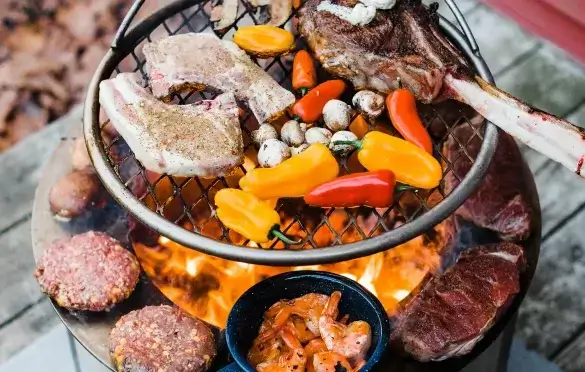A fire pit is an inviting, functional addition to your backyard that gives you an opportunity to host fun gatherings – and cook some delicious food. It’s true that you can use a fire pit mostly as decoration, providing warmth and light on even the darkest, coldest nights. But for true fire pit connoisseurs and cooking enthusiasts, a fire pit is an opportunity to create some amazing dishes.
That said, most people only scratch the surface when it comes to fire pit cooking. There’s nothing wrong with sticking to hot dogs and smores, there are far superior dishes and cooking styles to explore if you’re willing to give it a chance.
So how do you improve your fire pit cooking game?
Choose the Right Fire Pit
There are many types of fire pits available for sale, and each of them offer unique advantages and disadvantages. These are some of the most important considerations to keep in mind when shopping around:
· Size. Some fire pits are designed to be small and portable, offering a reduced scale experience for an affordable price. While these fire pits can fit almost anywhere and be transported to wherever you want to cook, they also struggle to feed large numbers of people. Alternatively, larger fire pits offer plenty of surface area for cooking and ample space to nurture the fire, but they can be more expensive, harder to move, and demanding of more fuel.
· Fuel. Speaking of fuel, you’ll also need to select a fire pit based on the type of fuel it’s designed to burn. The most traditional type of fire pit is one that burns wood or coal, but these days, it’s also common to find fire pits that run on electricity, propane, and natural gas. These fire pits do burn cleaner, and in many cases are less expensive to run, but they lack the cozy crackle of a traditional wood fire and they don’t offer the unique flavor profiles of wood or charcoal.
· Aesthetics. The aesthetics of your fire pit probably won’t play much of a role in the taste or texture of your finished culinary products, but it’s still an important consideration. How can you make sure your fire pit fits in with the rest of your outdoor aesthetics? What kind of centerpiece do you want for your outdoor gatherings?
Invest in a Grate (and Other Tools)
Once you have the right fire pit, invest in a grate for it, as well as other tools that can help you with the cooking process. A grate will allow you to grill using a fire pit, much like a conventional grill. Grilling gloves will protect your hands from the heat. And various utensils and grilling tools will help you manipulate food as it’s cooking and keep the grate clean. Don’t be afraid to spend a little extra money on these tools, as higher quality is often more expensive – but worth the cost.
Start With the Simple Things
Most people can cook on a fire pit with no prior knowledge or experience – in fact, it’s a staple of campground culinary fare. If you’re just getting started with fire pit cooking, consider trying to master the basics. Roasting hot dogs or sausages with cooking forks doesn’t take much effort or innovation, yet you’ll find it’s tricky to get the right balance of char and internal heat. Once you feel capable of cooking the simplest fire pit dishes to perfection, you can move on to more complicated ideas.
Marinate and Season Beforehand
While many fire pit staples can be cooked straight out of a package, many only reach peak flavor and consistency when marinated and seasoned beforehand. Do all the prep work you can before you even start the fire and try to imbue your meats, vegetables, and side dishes with deep, unmistakable flavor profiles.
Step Up Your Kebab Prep
Kebabs are some of the best things to cook over a fire pit; they’re incredibly easy to turn and manipulate, they can support a wide variety of meat and vegetable ingredients, and they’re even easy to eat once finished. There’s practically unlimited room for experimentation here, so assemble some of your personal favorites and add a unique twist to see how it turns out.
Protect the Flames
Consistency is vital for effective cooking, so do what you can to protect the flames of your fire pit. Excessive wind can cause the flames to flicker or become inconsistent, and can even kick up ash and dust to compromise whatever you’re cooking. Even a simple shield can provide some level of protection.
Time It Right
There’s a natural course of development for an average wood fire. At the beginning, there’s nowhere near enough heat to do any actual cooking. Once you throw on some decent logs, the heat will be intense and the flames will be powerful, creating an opportunity to char your food. At the end, the dull embers will provide reduced, but consistent heat. Try to time your cooking correctly to take advantage of each of these phases.
If you’re looking for further ways to learn and grow, try to watch and learn from other fire pit cooking experts. Attend other cookouts, talk to friends and family members who are interested in the culinary arts, and watch videos on the subject to expand your repertoire and get ideas for new recipes and techniques. There are some more tools and upgrades you can make, but for the most part, experience and exposure are going to be the best teachers.

